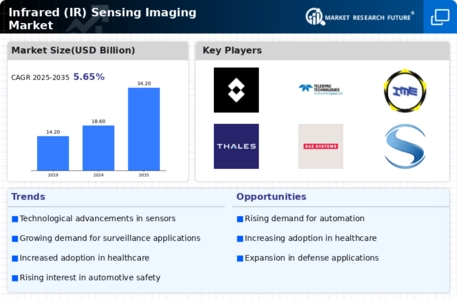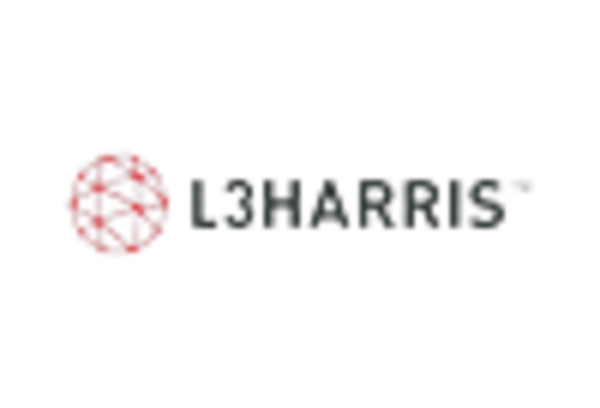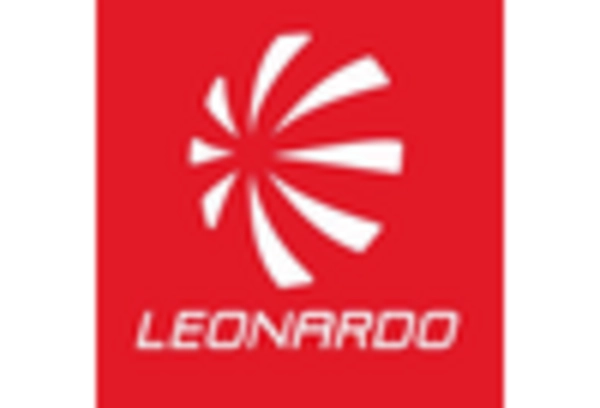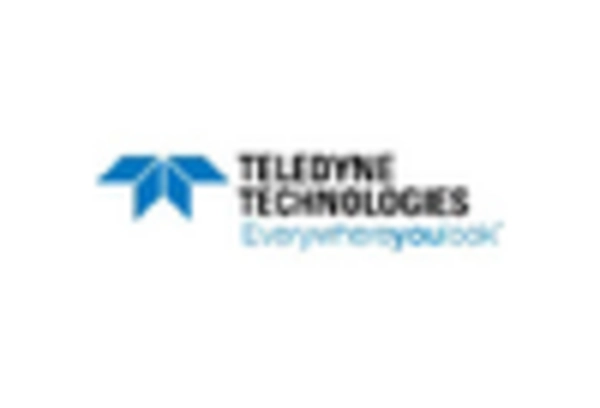Expansion of Automotive Applications
The automotive sector's increasing reliance on infrared sensing technologies is a notable driver for the Infrared (IR) Sensing Imaging Market. With the advent of advanced driver-assistance systems (ADAS), infrared imaging plays a crucial role in enhancing vehicle safety and performance. Features such as night vision systems, pedestrian detection, and adaptive cruise control are becoming standard in modern vehicles. The market for automotive infrared sensors is expected to witness substantial growth, driven by consumer demand for safer driving experiences. As manufacturers continue to innovate and integrate these technologies, the Infrared (IR) Sensing Imaging Market is likely to see a surge in adoption rates, reflecting the automotive industry's commitment to leveraging advanced imaging solutions for improved safety and efficiency.
Emerging Trends in Environmental Monitoring
The growing emphasis on environmental monitoring and management is emerging as a key driver for the Infrared (IR) Sensing Imaging Market. Infrared imaging technologies are increasingly utilized for applications such as wildlife monitoring, vegetation analysis, and climate change studies. The ability to capture thermal data provides valuable insights into ecological conditions and changes. As environmental concerns gain prominence, the demand for effective monitoring solutions is expected to rise. Market data suggests that investments in environmental technologies are on the rise, reflecting a broader commitment to sustainability. This trend indicates that the Infrared (IR) Sensing Imaging Market will likely benefit from increased adoption of infrared sensing technologies in environmental applications, aligning with global sustainability goals.
Rising Applications in Industrial Automation
The trend towards industrial automation is significantly influencing the Infrared (IR) Sensing Imaging Market. Industries are increasingly adopting infrared imaging for process monitoring, quality control, and predictive maintenance. The ability to detect temperature variations and identify potential equipment failures before they escalate is invaluable in maintaining operational efficiency. As industries strive for greater productivity and reduced downtime, the demand for infrared sensing technologies is expected to rise. Market data suggests that the industrial automation sector is poised for growth, with infrared imaging playing a critical role in enhancing operational capabilities. This trend indicates a promising future for the Infrared (IR) Sensing Imaging Market, as businesses seek to implement advanced technologies to optimize their processes.
Advancements in Military and Defense Applications
The military and defense sectors are increasingly leveraging infrared sensing technologies, which serves as a significant driver for the Infrared (IR) Sensing Imaging Market. Applications such as surveillance, reconnaissance, and target acquisition rely heavily on infrared imaging capabilities. The demand for enhanced situational awareness and operational effectiveness in defense operations is propelling investments in advanced infrared systems. Market forecasts indicate a steady increase in defense budgets, particularly in nations prioritizing modernization and technological superiority. As military applications continue to evolve, the Infrared (IR) Sensing Imaging Market is likely to experience growth, driven by the need for sophisticated imaging solutions that can operate effectively in diverse environments.
Growing Demand for Surveillance and Security Solutions
The increasing need for enhanced surveillance and security solutions is a pivotal driver for the Infrared (IR) Sensing Imaging Market. As urbanization accelerates, the demand for effective monitoring systems in public spaces, critical infrastructure, and private properties intensifies. The market for security cameras, which often utilize infrared technology, is projected to reach substantial figures, indicating a robust growth trajectory. This trend is further fueled by rising concerns over crime rates and the necessity for real-time monitoring. Consequently, the integration of infrared sensing imaging in security applications is likely to expand, providing clearer images in low-light conditions and enhancing overall situational awareness. The Infrared (IR) Sensing Imaging Market is thus positioned to benefit significantly from this growing demand, as stakeholders seek advanced solutions to address security challenges.


















Leave a Comment